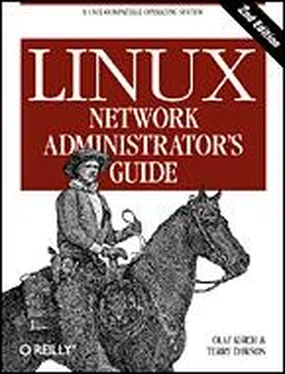creator
The name of the person creating the group. Enclose it in quotes if there are any spaces in the name.
Use the following syntax to change a group:
ctlinnd changegroup group rest
The arguments are defined as follows:
group
The name of the group to change.
rest
This argument should be coded in the same way as the flags field of the active file.
This command is useful to change the moderation status of a group.
Use the following syntax to remove a group:
ctlinnd rmgroup group
The argument is defined as follows:
group
The name of the group to remove.
This command removes the specified newsgroup from the active file. It has no effect on the news spool. All articles in the spool for the specified group will be expired in the usual fashion, but no new articles will be accepted.
Use the following syntax to renumber a group:
ctlinnd renumber group
The argument is defined as follows:
group
The name of the group to renumber. If a group is an empty string, all groups are renumbered.
This command updates the low-water mark for the specified group.
Allow/Disallow Newsreaders
Use the following syntax to allow or disallow newsreaders:
ctlinnd readers flag text
The arguments are defined as follows:
flag
Specifying n causes all newsreader connections to be disallowed. Specifying y allows newsreader connections.
text
The text supplied will be given to newsreaders who attempt to connect, and usually describes the reason for disabling newsreader access. When reenabling newsreader access, this field must be either an empty string or a copy of the text supplied when the newsreader was disabled.
This command does not affect incoming newsfeeds. It only controls connections from newsreaders.
Reject Newsfeed Connections
Use the following syntax to reject newsfeed connections:
ctlinnd reject reason
The argument is defined as follows:
reason
The text supplied should explain why incoming connections to innd are rejected.
This command does not affect connections that are handed off to nnrpd (i.e., newsreaders); it only affects connections that would be handled by innd directly, such as remote newsfeeds.
Allow Newsfeed Connections
Use the following syntax to allow newsfeed connections:
ctlinnd allow reason
The argument is defined as follows:
reason
The supplied text must be the same as that supplied to the preceding reject command or an empty string.
This command reverses the effect of a reject command.
Use the following syntax to disable the news server:
ctlinnd throttle reason
The argument is defined as follows:
reason
The reason for throttling the server.
This command is simultaneously equivalent to a newsreaders no and a reject, and is useful when emergency work is performed on the news database. It ensures that nothing attempts to update it while you are working on it.
Use the following syntax to restart the news server:
ctlinnd go reason
The argument is defined as follows:
reason
The reason given when stopping the server. If this field is an empty string, the server will be reenabled unconditionally. If a reason is given, only those functions disabled with a reason matching the supplied text will be restarted.
This command is used to restart a server function after a throttle, pause, or reject command.
Display Status of a Newsfeed
Use the following syntax to display the status of a newsfeed:
ctlinnd feedinfo site
The argument is defined as follows:
site
The site name (taken from the newsfeeds file) for which you wish to display the newsfeed's status.
Use the following syntax to drop a newsfeed:
ctlinnd drop site
The argument is defined as follows:
site
The name of the site (taken from the newsfeeds file) to which feeds are dropped. If this field is an empty string, all active feeds will be dropped.
Dropping a newsfeed to a site halts any active feeds to the site. It is not a permanent change. This command would be useful if you've modified the feed details for a site and a feed to that site is active.
Use the following syntax to begin a newsfeed:
ctlinnd begin site
The argument is defined as follows:
site
The name of the site from the newsfeeds file to which feeds are started. If a feed to the site is already active, a drop command is done first automatically.
This command causes the server to reread the newsfeeds file, locate the matching entry, and commence a newsfeed to the named site using the details found. You can use this command to test a new news feed to a site after you've added or modified its entry in the newsfeeds file.
Use the following syntax to cancel an article:
ctlinnd cancel Message-Id
The argument is defined as follows:
Message-ID
The ID of the article to be cancelled.
This command causes the specified article to be deleted from the server. It does not generate a cancel message.
Chapter 24. Newsreader Configuration
A newsreader is a program that users invoke to view, store, and create news articles. Several newsreaders have been ported to Linux. We will describe the basic setup for the three most popular newsreaders: tin, trn, and nn.
One of the most effective newsreaders is:
$ find /var/spool/news -name '[0-9]*' -exec cat {} \; | more
This is the way Unix die-hards read their news.
Most newsreaders, however, are much more sophisticated. They usually offer a full-screen interface with separate levels for displaying all groups the user has subscribed to, an overview of all articles in each group, and individual articles. Many web browsers double as newsreaders, but if you want to use a standalone newsreader, this chapter explains how to configure two classic ones: trn and nn.
At the newsgroup level, most newsreaders display a list of articles, showing their subject lines and authors. In big groups, it is difficult for the user to keep track of articles relating to each other, although it is possible to identify responses to earlier articles.
A response usually repeats the original article's subject, prepending it with Re:. Additionally, the References: header line should include the message ID of the article on which the response is directly following up. Sorting articles by these two criteria generates small clusters (in fact, trees) of articles, which are called threads . One of the tasks of writing a newsreader is devising an efficient scheme of threading, because the time required for this is proportional to the square of the number of articles.
We will not go into how the user interfaces are built here. All newsreaders currently available for Linux have a good help function; please refer to it for more details.
Читать дальше



![Andrew Radford - Linguistics An Introduction [Second Edition]](/books/397851/andrew-radford-linguistics-an-introduction-second-thumb.webp)








